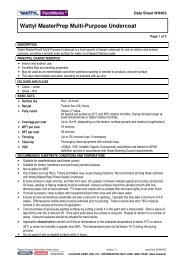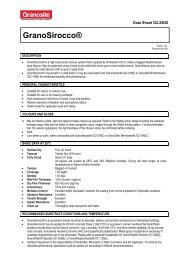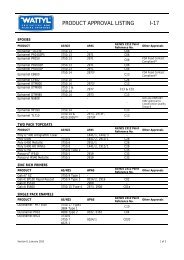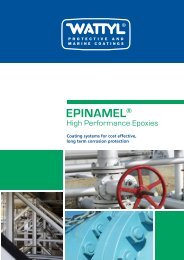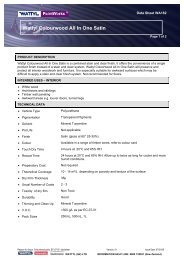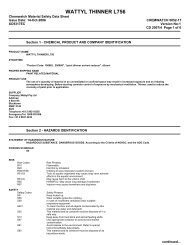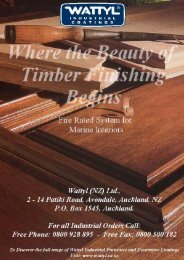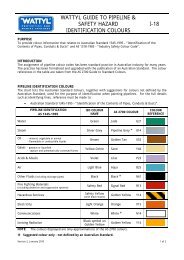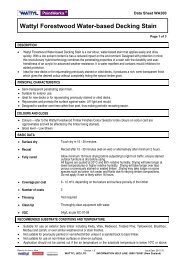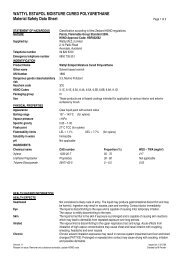Surface Preparation - Ferrous Metals - Wattyl Web Customer Service
Surface Preparation - Ferrous Metals - Wattyl Web Customer Service
Surface Preparation - Ferrous Metals - Wattyl Web Customer Service
You also want an ePaper? Increase the reach of your titles
YUMPU automatically turns print PDFs into web optimized ePapers that Google loves.
SURFACE PREPARATION<strong>Ferrous</strong> MetalI-10EXISTING SYSTEMSAt 14 – 21 MPa (2,000 – 3,000 psi) existing paint can be removed, however, at 7 – 10 MPa (1,000 – 1,500psi) only loosely adherent paint can be removed. If an existing system is left on the steel surface thenthere is a risk of island formation. Water can creep under the apparently ‘tightly adherent coating’ whichis subsequently overcoated, leading to failure. Secondly, an existing paint film may be sufficiently thickthat when overcoated there is an edge effect, where a freshly applied paint film moves away from a sharpedge and less paint is applied to the edge. This can be avoided by:• High pressure removal of all existing coating.• Feather all existing edges back to firm edge (i.e. discing).• Stripe coat also edges of existing system.Ballast TanksWith ballast tanks there are still a number of practical problems, which make it difficult to achieve auniformly acceptable standard of surface preparation. These problems are:• Complex form (i.e. stiffeners etc).• Poor visibility – constant water vapour (mist) present in the tank.• Constant high humidity leading to - high levels of flash rust, and- difficulty in achieving dry substrate prior to recoating.Special attention should be paid to these items.PREPARATION ON UNDERWATER SURFACESFouling, loose paint and other contaminants should be removed by High Pressure Water Cleaning. Anyfouling and/or loose paint remaining after High Pressure Water Cleaning is to be removed by scraping orsweep blasting. The removal of an oil or grease belt can be achieved by scraping heavy deposits from thesurface, and High Pressure Water Cleaning in combination with the use of suitable detergents. This shouldbe followed by a thorough fresh water wash and drying prior to blasting and/or repainting. It may benecessary to blast clean such areas after this operation when oil has penetrated the underlying paintsystems.Rusty spots should be pre-treated by blast cleaning and touched up with an anticorrosive system withinthe requirements given in the relevant specifications. If water (abrasive) blast cleaning is applied, asuitable primer should be used, followed by the system as described in the specification.CAST IRONDry Abrasive BlastAbrasive blast using a non-metallic grit, to achieve a surface similar to AS 1627.4, Sa 2½. Clean thesurface to remove all preparation residue.Wet Abrasive BlastWet abrasive blast using a non-metallic grit to achieve a surface similar to AS 1627.4, Sa 2½. Flash rustingwill occur almost immediately. High pressure water wash using clean, fresh water to remove all blastingresidue.Version 2, January 2010 7 of 8



